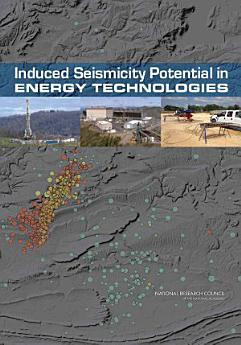Induced Seismicity Potential in Energy Technologies
Committee on Induced Seismicity Potential in Energy Technologies · Committee on Earth Resources · Committee on Geological and Geotechnical Engineering · Committee on Seismology and Geodynamics · Board on Earth Sciences and Resources · Division on Earth and Life Studies · National Research Council
আগ ২০১৩ · National Academies Press
ই-বুক
245
পৃষ্ঠা
reportরেটিং ও রিভিউ যাচাই করা হয়নি আরও জানুন
এই ই-বুকের বিষয়ে
In the past several years, some energy technologies that inject or extract fluid from the Earth, such as oil and gas development and geothermal energy development, have been found or suspected to cause seismic events, drawing heightened public attention.
Although only a very small fraction of injection and extraction activities among the hundreds of thousands of energy development sites in the United States have induced seismicity at levels noticeable to the public, understanding the potential for inducing felt seismic events and for limiting their occurrence and impacts is desirable for state and federal agencies, industry, and the public at large. To better understand, limit, and respond to induced seismic events, work is needed to build robust prediction models, to assess potential hazards, and to help relevant agencies coordinate to address them.
Induced Seismicity Potential in Energy Technologies identifies gaps in knowledge and research needed to advance the understanding of induced seismicity; identify gaps in induced seismic hazard assessment methodologies and the research to close those gaps; and assess options for steps toward best practices with regard to energy development and induced seismicity potential.
Although only a very small fraction of injection and extraction activities among the hundreds of thousands of energy development sites in the United States have induced seismicity at levels noticeable to the public, understanding the potential for inducing felt seismic events and for limiting their occurrence and impacts is desirable for state and federal agencies, industry, and the public at large. To better understand, limit, and respond to induced seismic events, work is needed to build robust prediction models, to assess potential hazards, and to help relevant agencies coordinate to address them.
Induced Seismicity Potential in Energy Technologies identifies gaps in knowledge and research needed to advance the understanding of induced seismicity; identify gaps in induced seismic hazard assessment methodologies and the research to close those gaps; and assess options for steps toward best practices with regard to energy development and induced seismicity potential.
ই-বুকে রেটিং দিন
আপনার মতামত জানান।
পঠন তথ্য
স্মার্টফোন এবং ট্যাবলেট
Android এবং iPad/iPhone এর জন্য Google Play বই অ্যাপ ইনস্টল করুন। এটি আপনার অ্যাকাউন্টের সাথে অটোমেটিক সিঙ্ক হয় ও আপনি অনলাইন বা অফলাইন যাই থাকুন না কেন আপনাকে পড়তে দেয়।
ল্যাপটপ ও কম্পিউটার
Google Play থেকে কেনা অডিওবুক আপনি কম্পিউটারের ওয়েব ব্রাউজারে শুনতে পারেন।
eReader এবং অন্যান্য ডিভাইস
Kobo eReaders-এর মতো e-ink ডিভাইসে পড়তে, আপনাকে একটি ফাইল ডাউনলোড ও আপনার ডিভাইসে ট্রান্সফার করতে হবে। ব্যবহারকারীর উদ্দেশ্যে তৈরি সহায়তা কেন্দ্রতে দেওয়া নির্দেশাবলী অনুসরণ করে যেসব eReader-এ ফাইল পড়া যাবে সেখানে ট্রান্সফার করুন।





